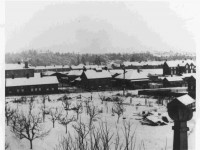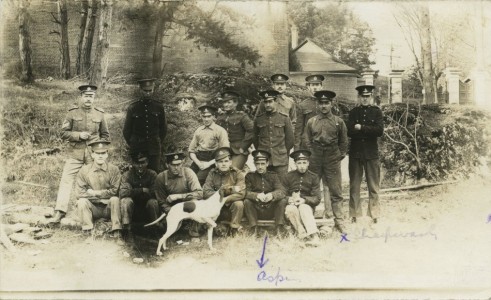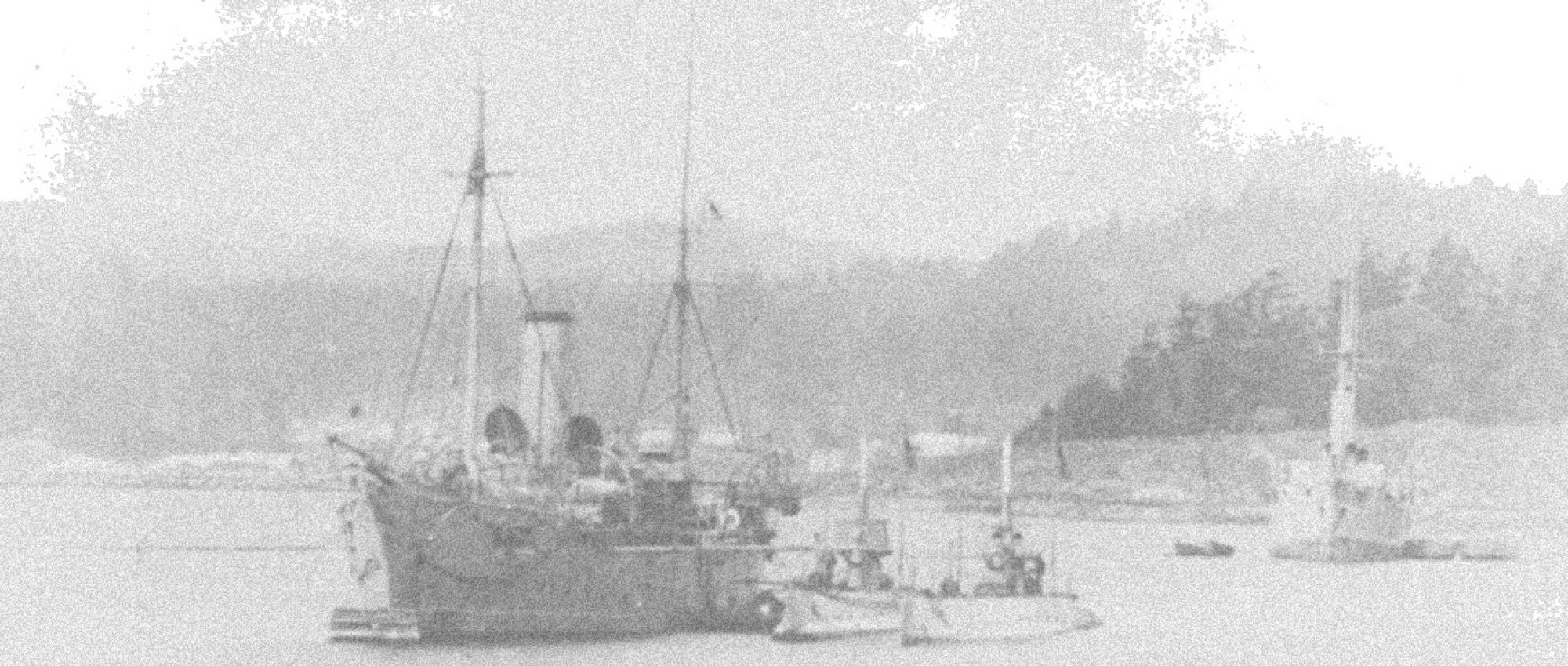Work Point Barracks activity in WWI
The barracks, more correctly known as Wark Point, was a military base established in 1887, as garrison to “C” Battery, Canadian Artillery for coastal defence and kept a continuous militia presence, and named after John Wark, the Chief Factor for the Hudson’s Bay Company.5 “The eleven acre flat, wooded site was an excellent location for the barracks because of it proximity to Macaulay Plains and Macaulay Point.”6

Well before World War I broke out, it was a centre for training and support. Of note is a Staff Officer’s Course where Lt Col Arthur Currie was named as one of the officer’s who passed the course in May of 1914.7
The 5th Field Regiment RCA, dates back to coastal defence at the Fort Macaulay battery in 1878. “Since then, Work Point Barracks and “Macaulay,” were always busy as various unit headquarters for recruiting, as a staging area and training centre, with numerous coastal, anti-aircraft and machine gun and search light emplacements for its protection.”8
Coastal defence was much on the mind of the military and an article in the Daily Colonist dated January 3, 1914 stressed the need for strengthening personnel at Work Point. Just a few months later, a comment on military activity in the Daily Colonist dated July 14 in the same year was oddly prescient, stating:
Whatever may be thought or said in political circles concerning Canada’s contributions towards Imperial defence at sea, it is quite certain that the young men and veterans of Victoria have not the slightest intention of laying themselves open to the charge that they are not alive to the duty of doing their utmost to be ready to defend their country should the unfortunate necessity ever arise.9
On August 2, before war was officially declared between Great Britain and Germany, the 5th Field Regiment was already mobilizing and manning defence forts such as Fort Macaulay in Esquimalt. Just a few weeks later, on August 26, 68 officers, N.C.O.’s and men left Victoria for Valcartier Quebec to join the first Canadian Contingent for overseas.10

The militia unit Victoria 95th Regiment of Garrison Artillery also mobilized during at this time, moving to Work Point for the purpose of manning local defences.11 Coastal defence was a priority, especially with the knowledge that German cruisers were lurking in the Pacific. Although once trained for overseas duty, soldiers from the 95th and 5th were sent to fight in the European conflict, it was thought that men experienced on the big guns would have to stay behind.12
Work Point Barracks was extremely busy as a recruiting centre, not only for overseas duty but for coastal defence, for such groups as the Royal Canadian Regiment, the 5th Regiment, and British Columbia Interment Guards, a cyclists’ platoon and the Victoria Squadron of BC Horse.13 A Colonel Ogilvie was given credit for the high level of organization required to direct activity at the barracks that included supervising a Major, a Lieutenant and seven clerks, including dealing with instructions from Ottawa and the constant recruiting.14 News paper notices in 1916 urged men to “fill the places of those who have gone forward.”15
A recruit in the Royal School of Infantry, Charles Durfee Harper described his accommodation in 1917:
The barracks are very comfortable. Our buildings are of brick, heated by stoves and there are two fireplaces in every room. The men are furnished with cots, straw mattresses, pillow, two sheets and four blankets.16
On March 23, 1917, a fire broke out in the Administrative Building and much paperwork was lost. Fortunately, the Central Registry Office file were saved.17 The 5th regiment was demobilized in December 1918, after the war was over. “During the last four years the regiment has been on continuous service in the local forts, and has trained and sent to France nearly 1,500 men, of whom 100 were commissioned officers.”18
In 1920, the Princess Patricia’s Canadian Light Infantry took over garrison duties, and remained there for 19 years.19
by Catherine Gilbert
